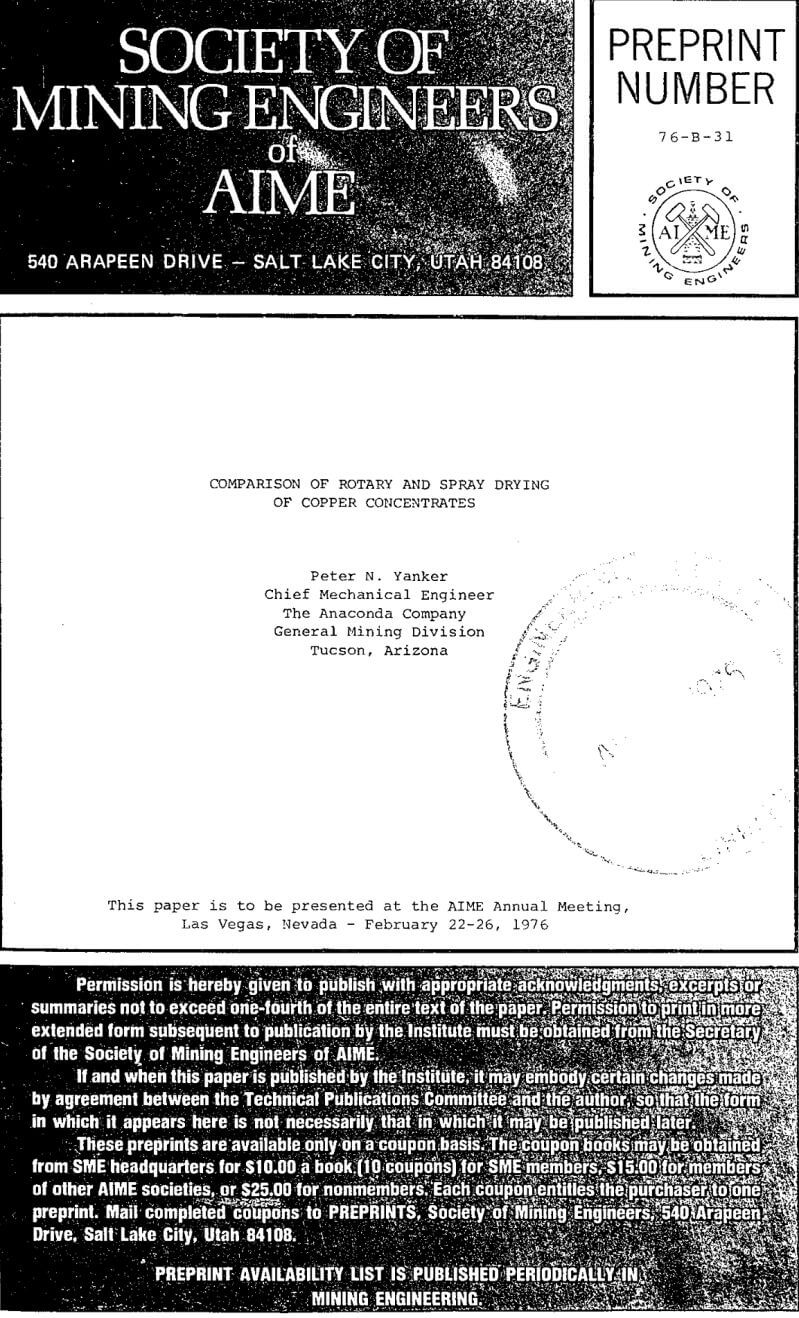The rotary drying system consists of a final concentrate thickener to dewater the slurry to about 60%-70% solids; a vacuum filter (disc or drum) with the necessary vacuum pumps to dewater the thickened material further to about 14%-20% moisture on a dry basis; a collecting belt underneath the filter to receive the filter cake; a stainless steel type ribbon screw conveyor extending into the dryer feed end to feed the cake into rotary dryer; the rotary dryer with its air heater reduces the moisture to ± 6%; a collecting belt for receiving the final dried product and to carry it to storage; a dust cyclone to collect the heavy particles and a wet scrubber for final cleaning of gases going into the atmosphere.
The spray drying system consists of fewer elements. It has a final concentrate thickener to dewater the slurry to 60%-70% solids. From here on there are few similarities between the two systems. A surge tank receives the underflow from the thickener where it is also agitated (also receives recirculation from feed tank); a feed tank which feeds the concentrate to the atomizer; drying chamber which is charged by the atomizer with the slurry and produces a 3% moist product.
The heated air flows co-currently through a rotating cylinder which is slightly inclined from the horizontal axis. The slope allows flow of material from the higher feed end to the discharge end as the cylinder rotates.
ROTARY DRYING
Feed Rate 75.00 DSTPH @ 20% mositure
Production Rate 75.00 DSTPH @ 6% moisture
Operating Temperature
Air Inlet 1800° F
Air Outlet 180° F
Moisture
In Feed 20%
In Product 6%
SPRAY DRYING
Feed Rate 75.00 DSTPH @ 40% moisture
Production Rate 75.00 DSTPH @ 3% moisture
Operating Temperature
Air Inlet 1800° F
Air Outlet 180° F
Moisture
In Feed 40%
In Product 3%
